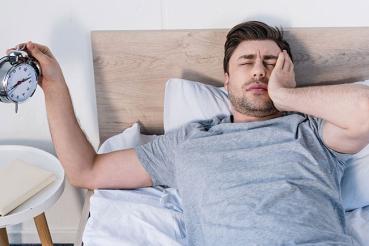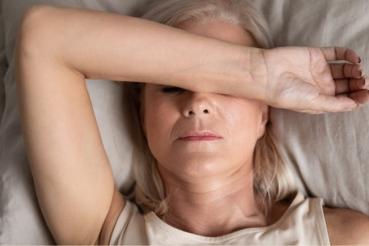Many of us dream of seeing the world the way Janet Lancsak has. She’s traveled around the globe with her husband and family. “We've been to South Africa,” Janet says. “We've been to Victoria Falls, then we went to Vietnam, Cambodia, and then we went to Ecuador, and we went to the Galapagos and saw the turtles, and we went to Machu Picchu.”
But for over a decade, the 73-year-old retiree only dreamed of a good night’s sleep. “I was complaining about how tired I was to my primary care doctor,” Janet says. “I had a sleep study, and that's when they found out I had sleep apnea.”
Obstructive sleep apnea happens when the tissue in the back of the throat collapses and blocks the airway during sleep. It can cause people to stop breathing for 10 seconds or more several times throughout the night. This left Janet with very poor sleep quality and fatigue during the day.
When it goes untreated, sleep apnea can also contribute to obesity, high blood pressure, diabetes, depression, stroke and heart attack, among other conditions, so it was even more important that Janet get the care she needed.
Tired of the mask
Janet used to work at Loyola University, where she also initially received medical care for her sleep apnea. Her first sleep medicine physician prescribed a CPAP machine, which pumps air into a patient’s airway as they sleep, keeping it open so they can breathe. As they sleep, the patient must wear a mask that connects to the machine via a hose.
But many sleep apnea patients, like Janet, have difficulty with CPAP machines and masks. “I would use it sometimes, but it was such a hassle,” Janet says. “Every morning I wore it, it would be on the floor when I woke up. I couldn't deal with it. And my husband went into the other room just to sleep. I was very agitated. I didn't sleep well.”
To make matters worse, Loyola sent Janet a letter saying they would no longer have a sleep medicine physician. She was left with only two options to continue her care. She could either go to the University of Chicago for treatment, or she could go to RUSH.
Inspired by a familiar face
Janet chose to go to RUSH for care, and her physician there suggested Inspire.
“Inspire is a hypoglossal nerve stimulator implant that is turned on at night time before bed and stimulates the tongue every time you take a breath,” says Michael Hutz, MD, otolaryngologist at RUSH who specializes in treating obstructive sleep apnea. “By moving the tongue forward with each breath, the implant prevents the throat from closing, thus improving a patient’s breathing during sleep.”
Janet agreed to get the Inspire implant, and once she saw who would be performing the procedure — a familiar face that she recognized — her mind was instantly put at ease. “The door opens, and the doctor puts his mask down. He says, ‘Remember me?’” Janet says. “And it was Dr. Michael Hutz from Loyola.”
It turns out that Janet had known Hutz since her days at Loyola. “I love Michael. I have to say ‘Dr. Hutz,’ but I've known him since he was a medical student,” Janet says. “So, it's kind of hard for me to get professional with him.”
Sleeping soundly
Hutz performed the simple, outpatient procedure, and in under three days, Janet made a full recovery. “I had no pain with the incision, no pain with my neck where the wire goes up,” says Janet.
Her sleep started to improve, as well. “After her surgery, Janet underwent a home sleep study that showed significant improvement in her sleep apnea,” says Hutz. “She continues to use the implant nightly and has been gaining great benefit from her surgery.”
Janet is also much happier with her implant than the CPAP machine, particularly with how much easier it is to get quality sleep. “I told Dr. Hutz that the incision could have gone a little lower because now I can't wear strapless, and he'd laugh. I don't wear strapless stuff,” Janet says with a smile. “But anyway, it's just great. I can't tell you how much I love it. This implant was the best thing I ever did.”
Hutz recommends that anyone who lives with sleep apnea see their physician or ENT to discuss ways to improve CPAP tolerance or explore alternatives like Inspire. “Inspire can be an excellent option for patients who have moderate to severe obstructive sleep apnea and are not significantly overweight,” says Hutz.
Now, Janet only needs a yearly follow-up visit to make sure the implant is still doing its job. She feels better and certainly hasn’t stopped her world travels. “We took the kids and our grandchildren to Hawaii for our 50th anniversary,” Janet says. “And my 16-year-old grandson said, ‘Grandma, why can't we live here?’” She laughs and says, “Because I didn't win the billion-dollar lotto.”
Janet may not have won the lottery, but thanks to her treatment at RUSH, she can now dare to dream during a great, restful sleep.
If you need an evaluation and treatment for a sleep disorder, call RUSH at (888) 352-7874.




